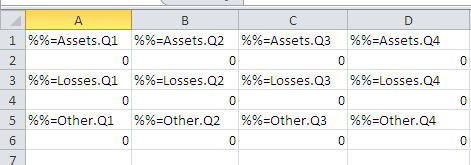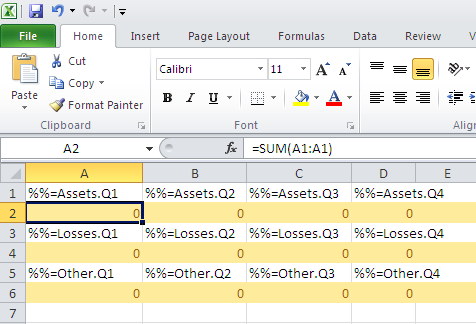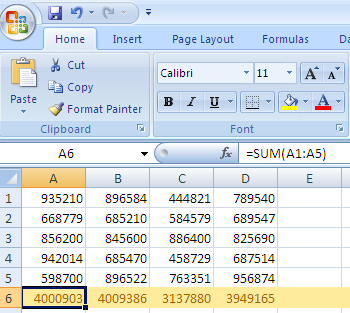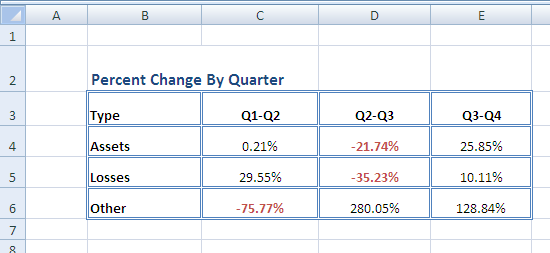Table of Contents |
|---|
Setting Up the Template
Getting Started
In this tutorial ExcelTemplate is being used to populate data in a template set up with styles and formats. This part of the tutorial uses formulas and persists Excel styles.
Data Sheets
This sub-report makes use of a data sheet. This is where the data markers will go. It should look something like this: 
The alternating rows (highlighting added for demonstration) contain sum formulas, visible in the function bar below: 
The sum formula is the standard Excel function. When the data is populated, the A1:A1 reference gets updated to include all the data. The result should be something like this (highlighting added for demonstration): 
Referencing the Data Sheet
Number Formats
Setting Styles
Adding an ExcelWriter Reference in Visual Studio
Create a .NET project and add a reference to the ExcelWriter library.
- Open Visual Studio and create a .NET project.
- The sample code uses a web application.
- Add a reference to SoftArtisans.OfficeWriter.ExcelWriter.dll
- SoftArtisans.OfficeWriter.ExcelWriter.dll is located under Program Files > SoftArtisans > OfficeWriter > dotnet > bin
Writing the Code
1. Include the SoftArtisans.OfficeWriter.ExcelWriter namespace in the code behind
2. In the method that will run the report, instantiate the ExcelTemplate object.
3. Open the template file with the ExcelTemplate.Open method.
4. Create a DataBindingProperties object. None of the binding properties will be changed for this tutorial, but DataBindingProperties is a required parameter in ExcelTemplate data binding methods.
Data Binding
1.Get the data for the Assets, Losses, and Other datasets
These calls are to a helper method GetCSVData that parses the CSV files and returns a DataTable with the values.
If you are following in your own project and would like to parse the CSV files as well, you will need to:
- Add a reference to
GenericParsing.dll - Include
GeneringParsingat the top of your code. - Add the
GetCSVDatamethod that can be found in the sample code.
2. Use ExcelTemplate.BindData to bind the data for the Top and Details Sales data sets.
3. Call ExcelTemplate.Process() to import all data into the file.
4. Call ExcelTemplate.Save() to save the final file.
The final output should look something like this: 
Final Code
Downloads
TBA
